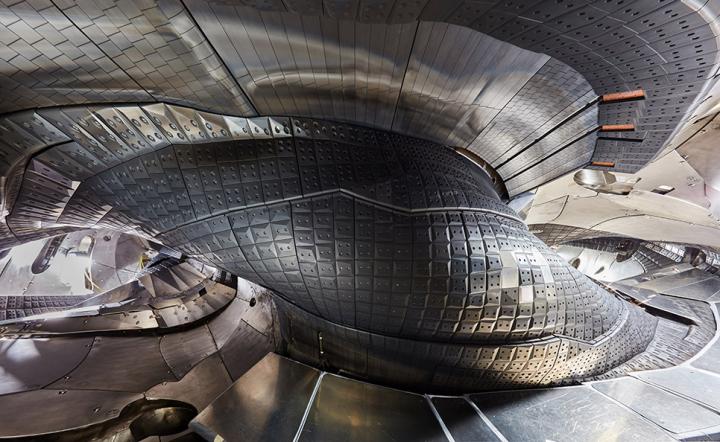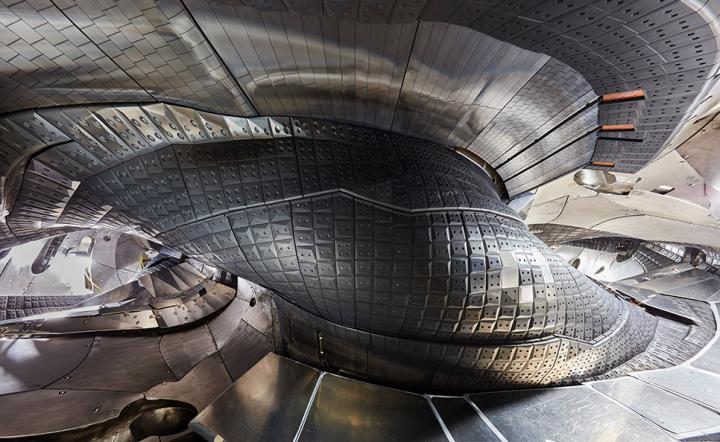
Credit: (Image credit – Bernhard Ludewig, Max Planck Institute of Plasma Physics)
PORTLAND, Ore.–Imagine building a machine so advanced and precise you need a supercomputer to help design it. That's exactly what scientists and engineers in Germany did when building the Wendelstein 7-X experiment. The device, funded by the German federal and state governments and the European Union, is a type of fusion device called a stellarator. The new experiment's goal is to contain a super-heated gas, called plasma, in a donut-shaped vessel using magnets that twist their way around the donut.
The team completed construction of Wendelstein 7-X, the world's most advanced superconducting stellarator, in 2015 and, since then, scientists have been busy studying its performance (Figure 1).
"The advantage of stellarators over other types of fusion machines is that the plasmas produced are extremely stable and very high densities are possible", said Dr. Novimir Pablant, a U.S. physicist from the Princeton Plasma Physics Laboratory, who works alongside a multinational team of scientists and engineers from Europe, Australia, Japan, and the United States (the U.S. collaboration is funded by the Department of Energy).
Using a tool called an X-ray spectrometer, Pablant studied the light given off by the plasma to answer an important question: Did the design of Wendelstein 7-X's twisted magnetic field work? His results indicate that, indeed, the plasma temperatures and electric fields are already in the range required for peak performance (Figure 2). He will present his work at the American Physical Society Division of Plasma Physics conference in Portland, Ore.
If the scientists working on Wendelstein 7-X are successful in optimizing the machine performance, the plasma contained in the donut will become even hotter than the sun. Atoms making up the plasma will fuse together, yielding safe, clean energy to be used for power. This achievement is a major milestone as it shows that it is possible to achieve temperatures of more than 10 million degrees in high-density plasmas using only microwaves to heat the electrons in the plasma. This achievement takes us one step closer to making fusion power a reality.
###
For additional information see also: [1] http://www.ipp.mpg.de/4413312/04_18
Media Contact
Saralyn Stewart
[email protected]
512-694-2320
@APSphysics
http://www.aps.org





